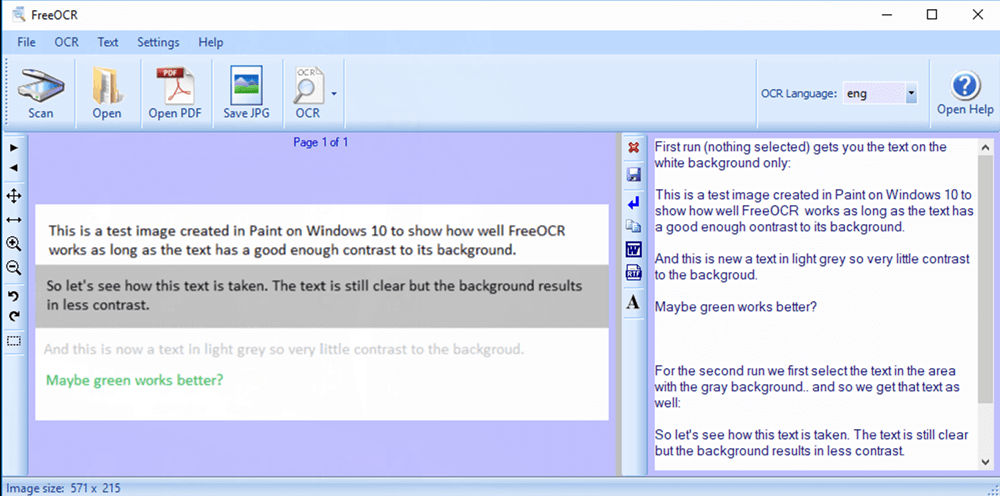

#Easy screen ocr review full#
You can find the full list of languages EasyOCR supports on the following page.Ĭurrently, EasyOCR only supports OCR’ing typed text. If you have a CUDA-capable GPU, the underlying PyTorch deep learning library can speed up your text detection and OCR speed tremendously.Īs of this writing, EasyOCR can OCR text in 58 languages, including English, German, Hindi, Russian, and more! The EasyOCR maintainers plan to add additional languages in the future. The EasyOCR package is created and maintained by Jaided AI, a company that specializes in Optical Character Recognition services.ĮasyOCR is implemented using Python and the PyTorch library.
#Easy screen ocr review how to#
To learn how to use EasyOCR for Optical Character Recognition, just keep reading.įigure 1: Optical Character Recognition (OCR) is made easy with the EasyOCR Python package. Luckily, it’s not - and today I’ll show you how to use EasyOCR to implement Optical Character Recognition in your own projects.
#Easy screen ocr review code#
From there, all you need is two lines of code to perform OCR - one to initialize the Reader class and then another to OCR the image via the readtext function.


You can start by choosing your own datasets or using our PyimageSearch’s assorted library of useful datasets.īring data in any of 40+ formats to Roboflow, train using any state-of-the-art model architectures, deploy across multiple platforms (API, NVIDIA, browser, iOS, etc), and connect to applications or 3rd party tools. Sign up or Log in to your Roboflow account to access state of the art dataset libaries and revolutionize your computer vision pipeline. Roboflow has free tools for each stage of the computer vision pipeline that will streamline your workflows and supercharge your productivity. It helps the OCR system to handle a wide range of text styles, fonts, and orientations, enhancing the system’s overall effectiveness. EasyOCR, as the name suggests, is a Python package that allows computer vision developers to effortlessly perform Optical Character Recognition.Ī varied dataset of text images is fundamental for getting started with EasyOCR.


 0 kommentar(er)
0 kommentar(er)
